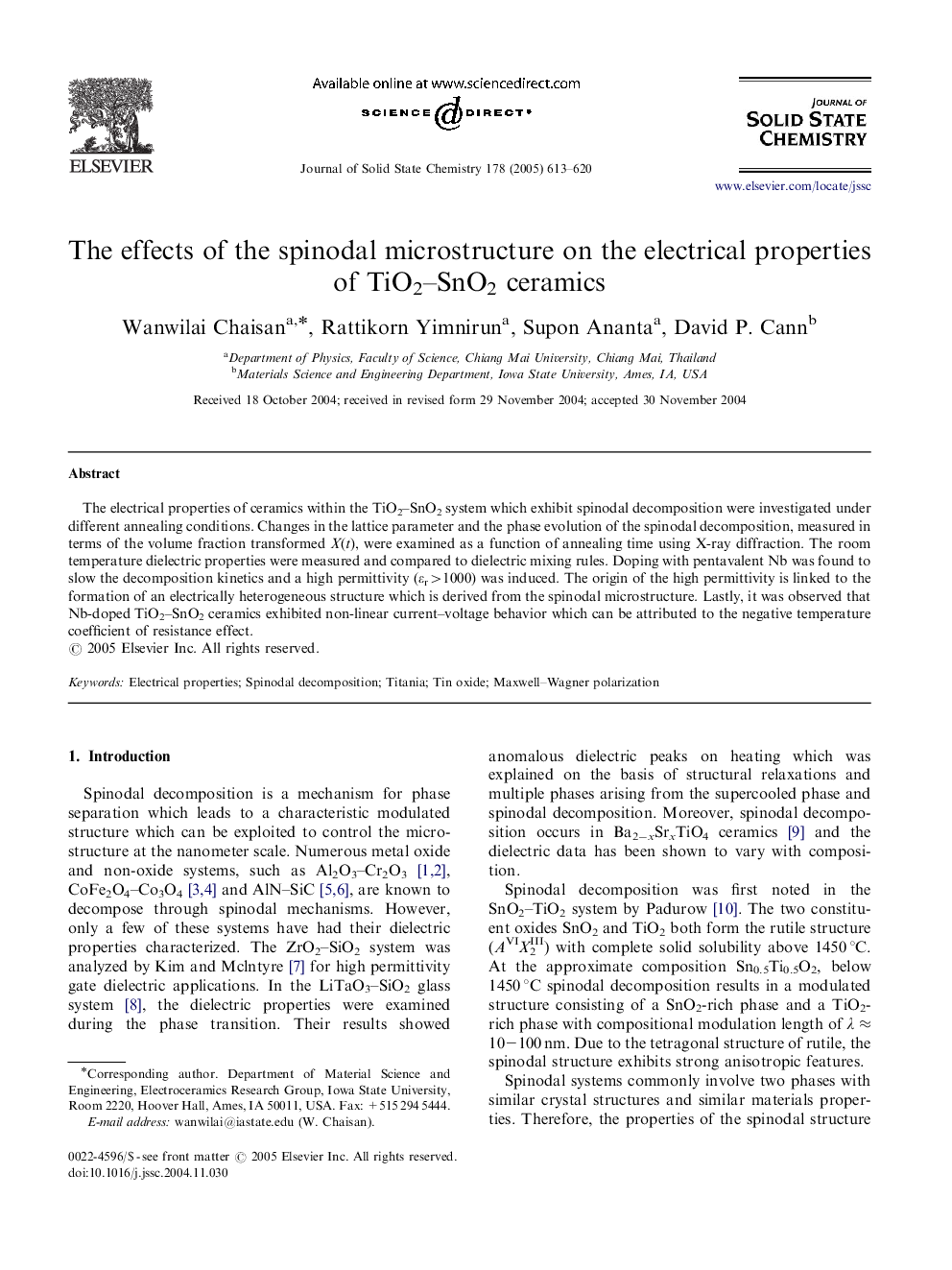| Article ID | Journal | Published Year | Pages | File Type |
|---|---|---|---|---|
| 10576779 | Journal of Solid State Chemistry | 2005 | 8 Pages |
Abstract
The electrical properties of ceramics within the TiO2-SnO2 system which exhibit spinodal decomposition were investigated under different annealing conditions. Changes in the lattice parameter and the phase evolution of the spinodal decomposition, measured in terms of the volume fraction transformed X(t), were examined as a function of annealing time using X-ray diffraction. The room temperature dielectric properties were measured and compared to dielectric mixing rules. Doping with pentavalent Nb was found to slow the decomposition kinetics and a high permittivity (εr>1000) was induced. The origin of the high permittivity is linked to the formation of an electrically heterogeneous structure which is derived from the spinodal microstructure. Lastly, it was observed that Nb-doped TiO2-SnO2 ceramics exhibited non-linear current-voltage behavior which can be attributed to the negative temperature coefficient of resistance effect.
Related Topics
Physical Sciences and Engineering
Chemistry
Inorganic Chemistry
Authors
Wanwilai Chaisan, Rattikorn Yimnirun, Supon Ananta, David P. Cann,
